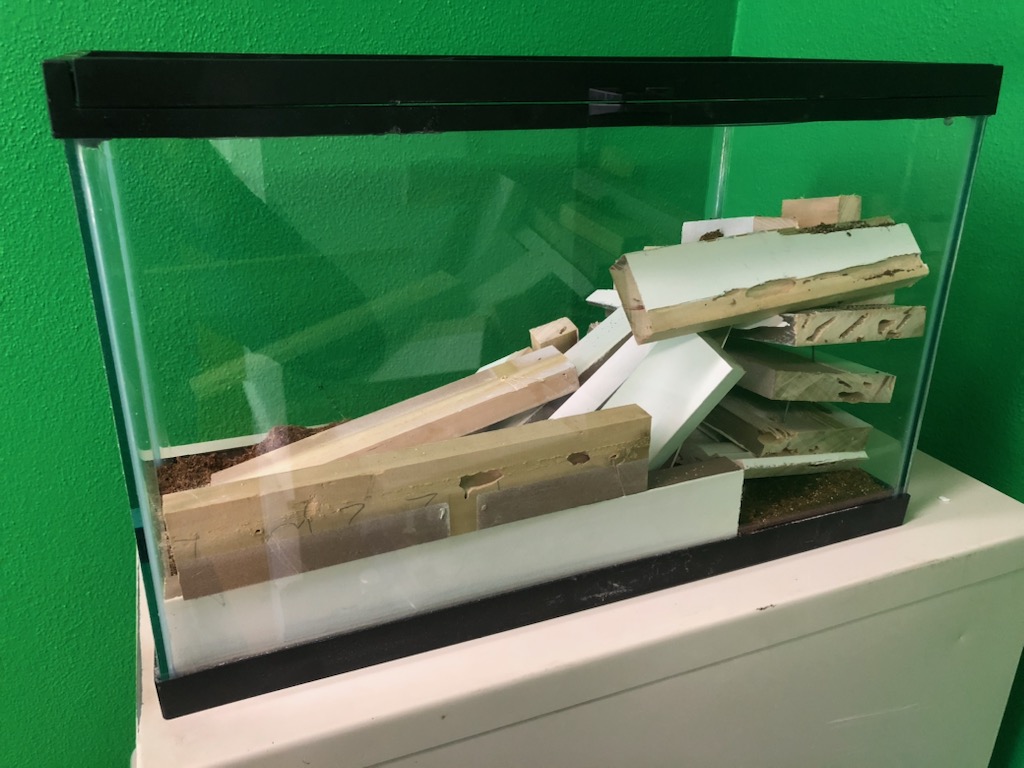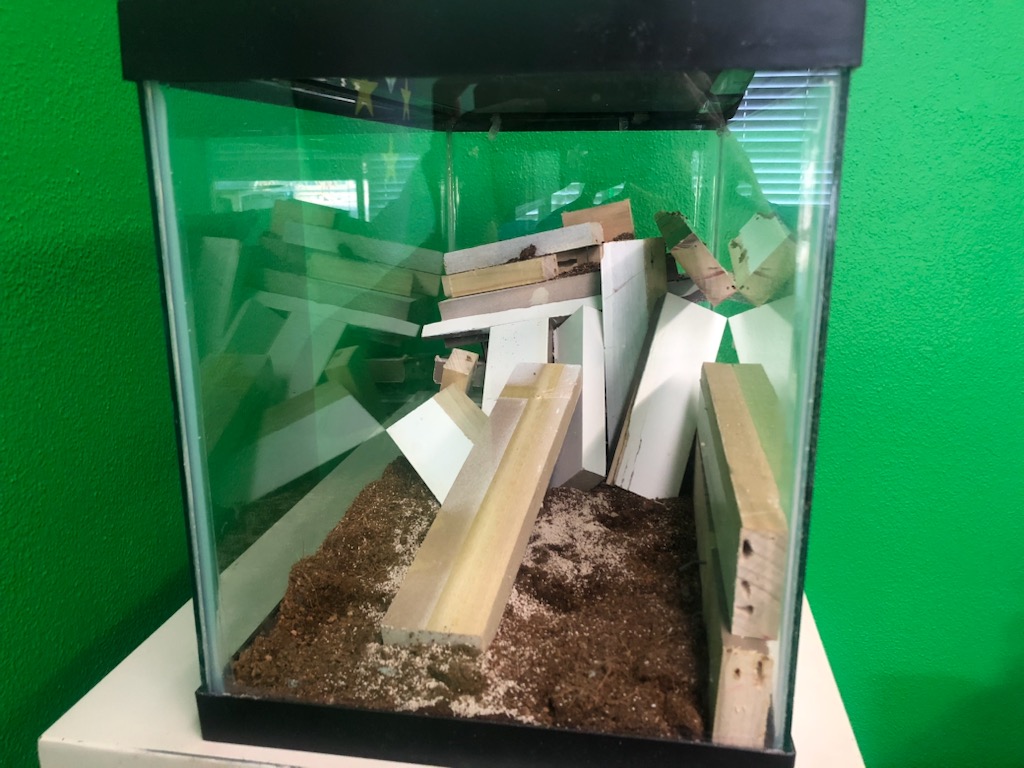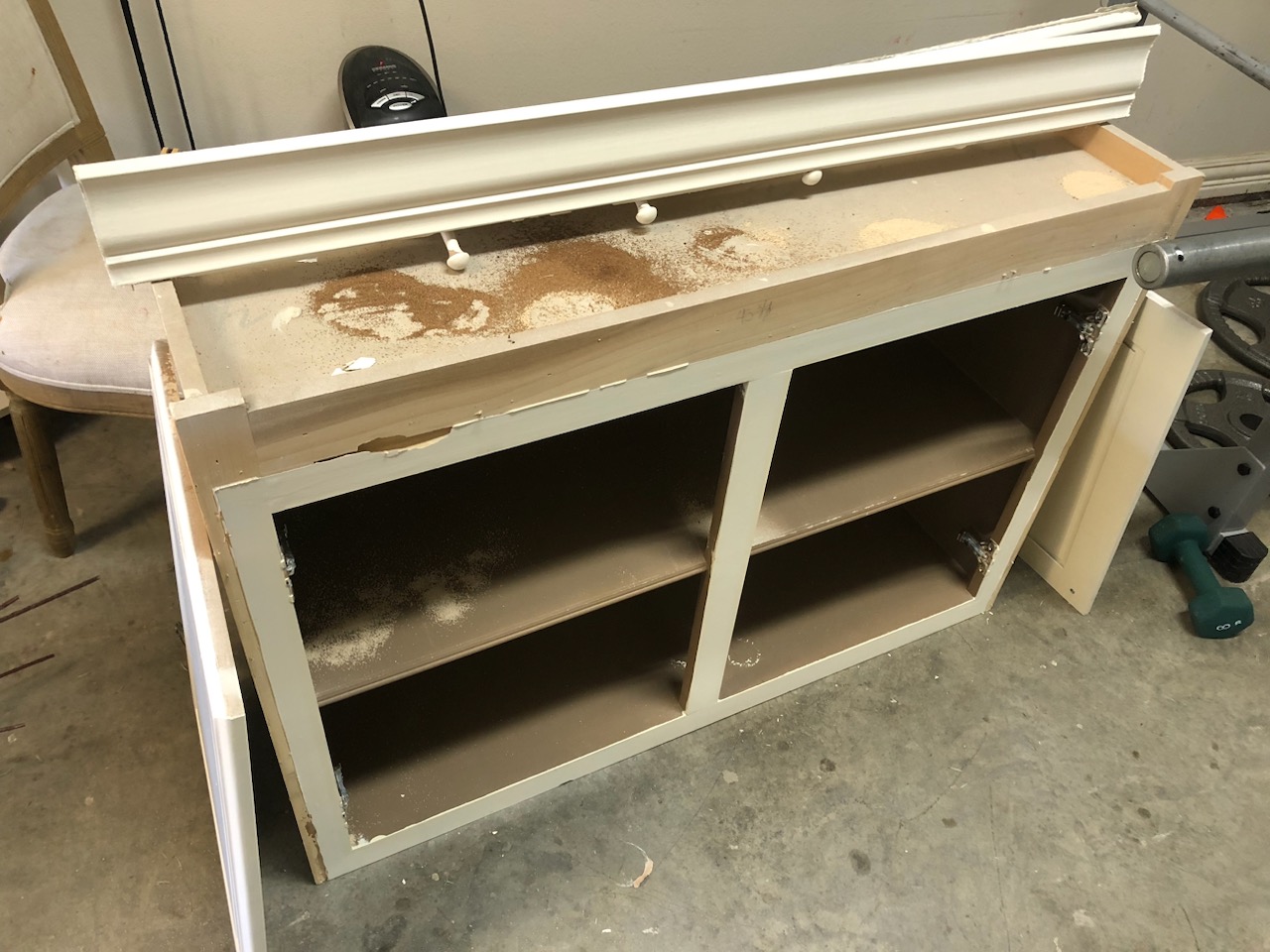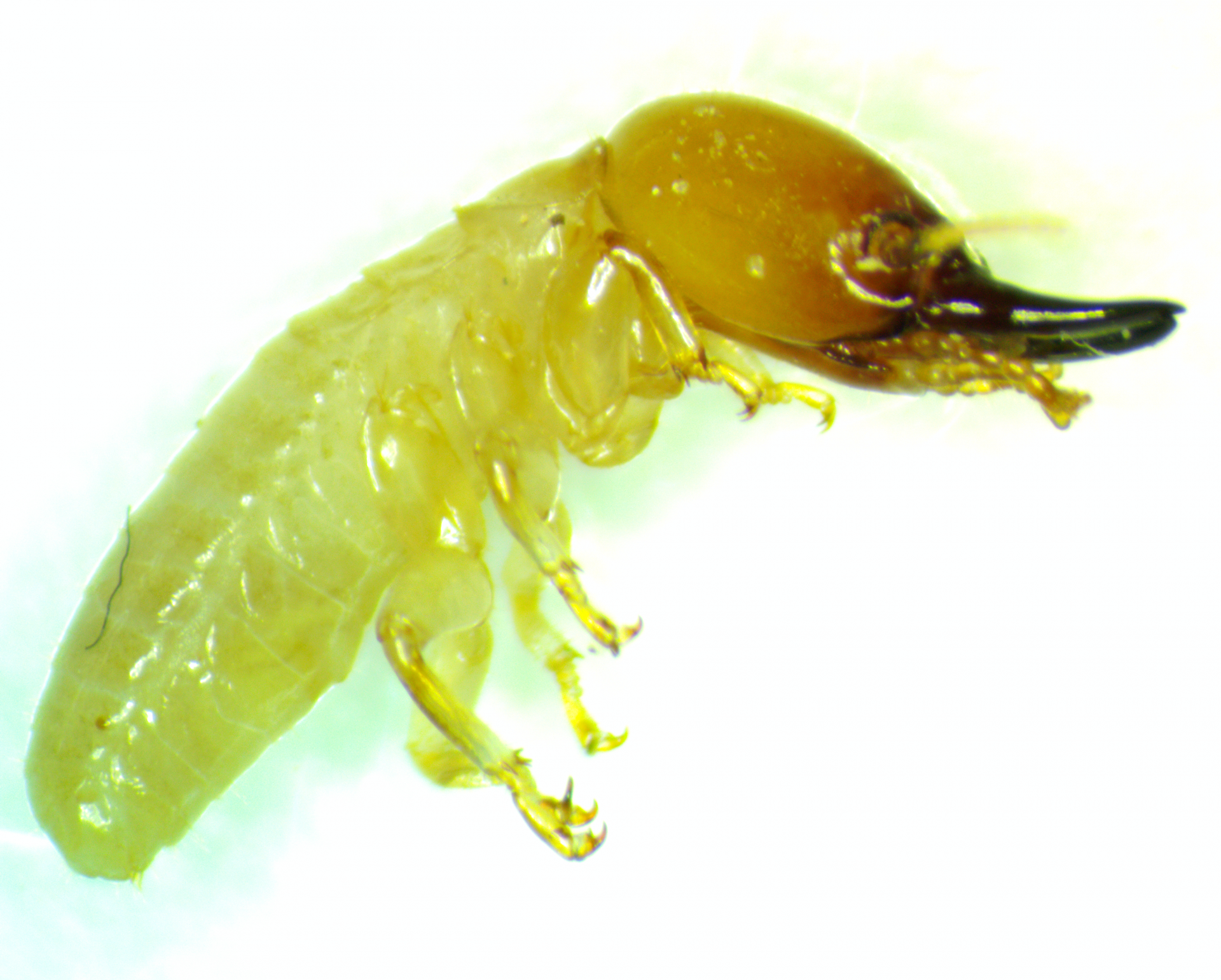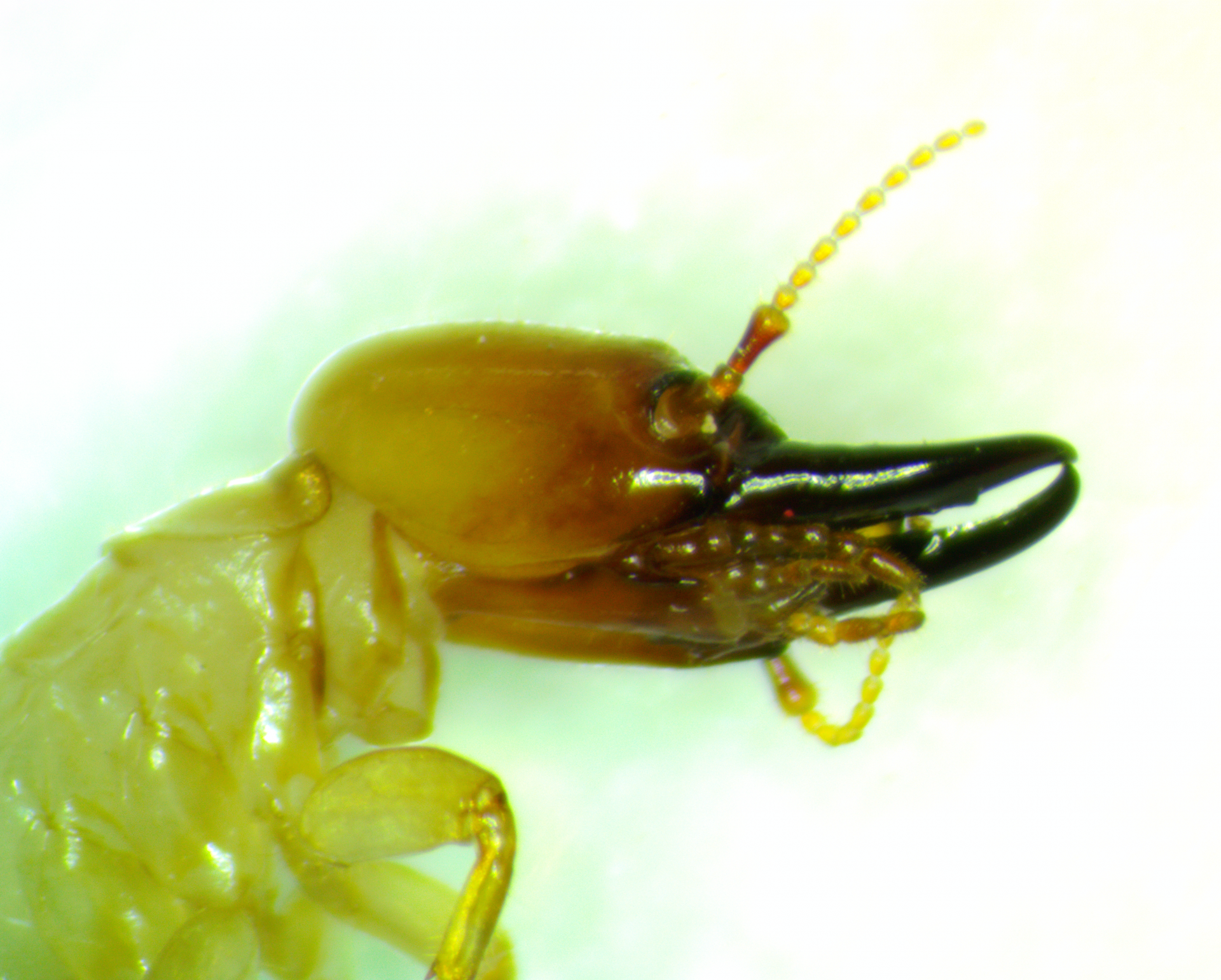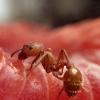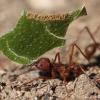Howdy,
I recently collected a drywood termite colony from a piece of infested furniture. In Texas for geography. It is an Incistitermes species where the soldiers have a more rounded head than an elongated block shape. Unfortunately no queen or king were observed, but the colony was full of nymphs, a few secondary reproductives, nymphs developing wingpads, many workers, and a few soldiers. I think the total population is around 100. I suspect the wood used to make the furniture had a portion of a full drywood termite colony that did not include the original queen and king.
We sliced up the furniture carefully, following the galleries and tunneling, dumping the termites into a 10 gallon aquarium with a cocofibre substrate. I did not add any moisture to the cocofibre. I also took the cut up pieces (especially ones with galleries already) and placed them in the 10 gallon aquarium.
Can this colony continue to perpetuate itself? Can the younger workers, nymphs, or immature alates develop into proper queen or king reproductives?
Aside from what I have already done, is there something else I should do to ensure their survival? Ideal temperature or humidity ranges? New wood substrate?
Pictures are attached of the furniture (covered in drywood termite frass), the 10 gallon setup, and microscope images of one of their soldiers.
Any help with this would be greatly appreciated. I am an experienced antkeeper, but termites are an unexplored territory for me.



